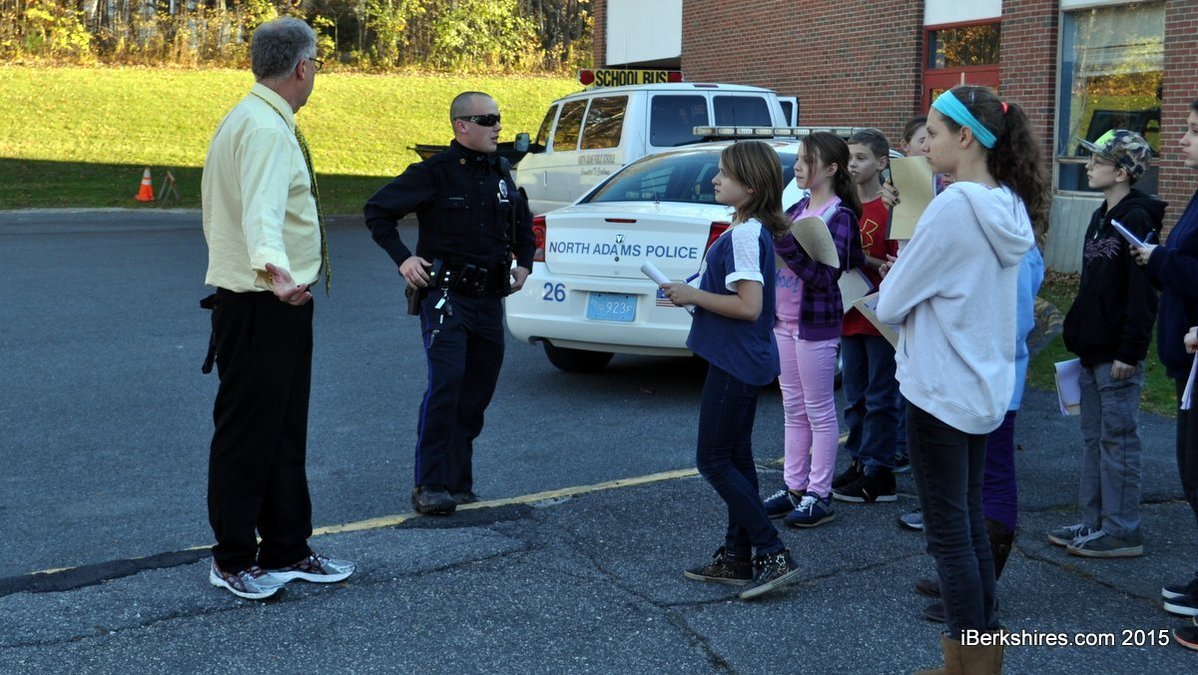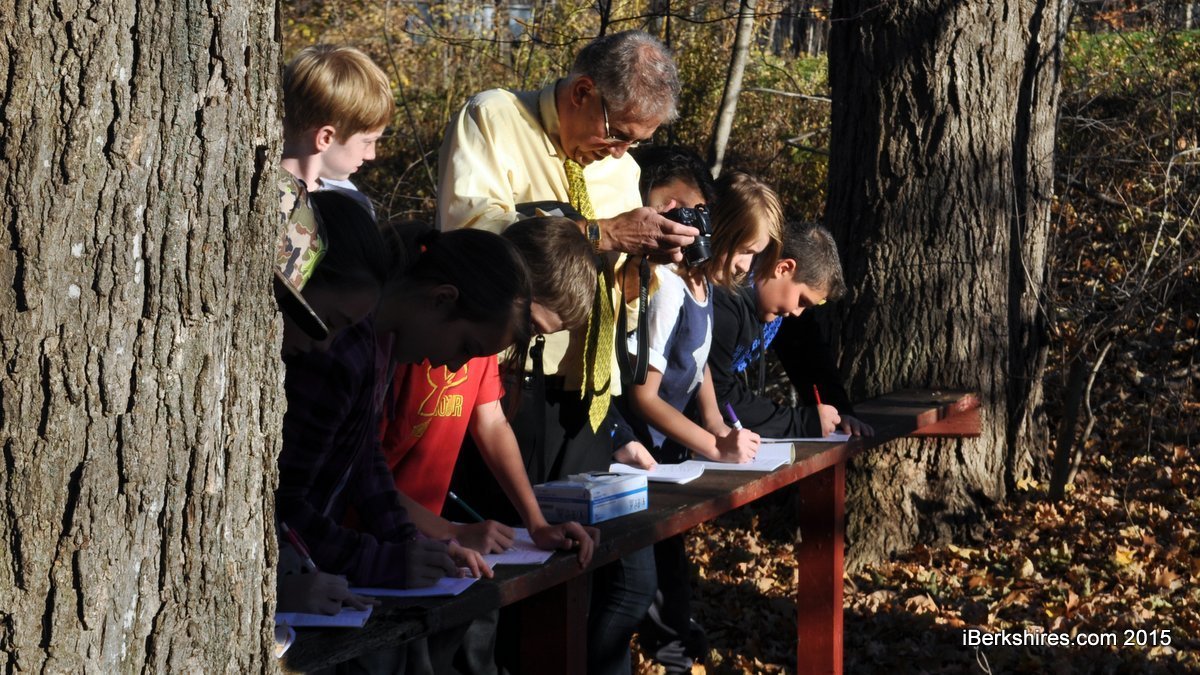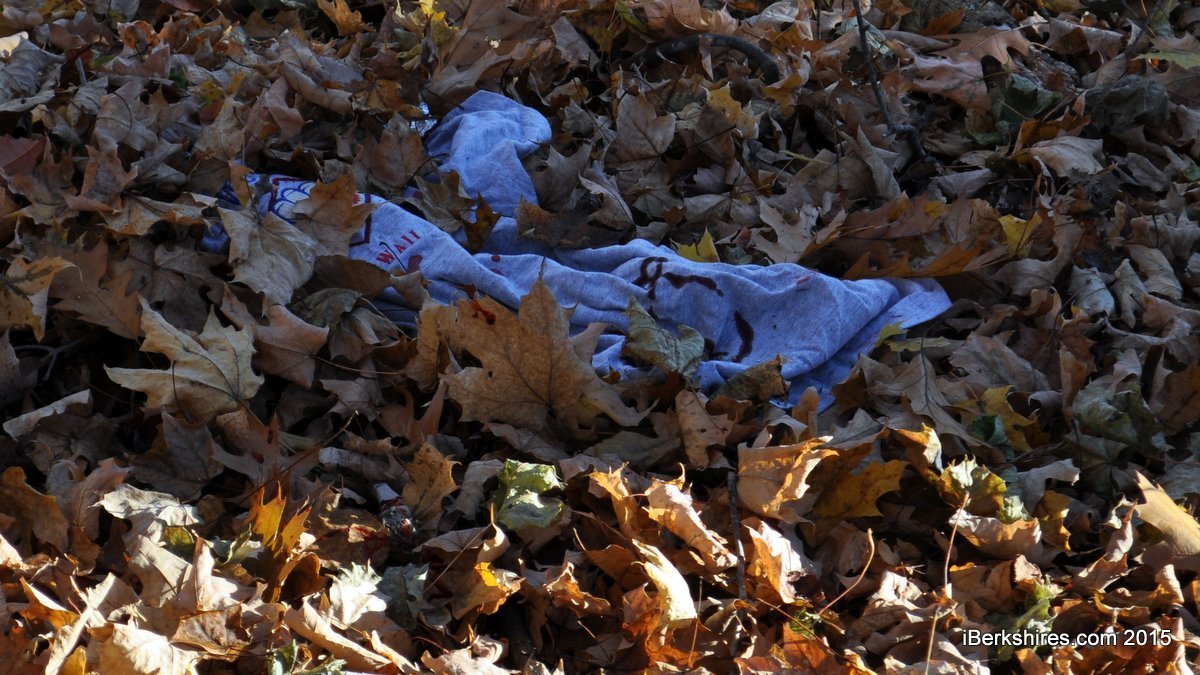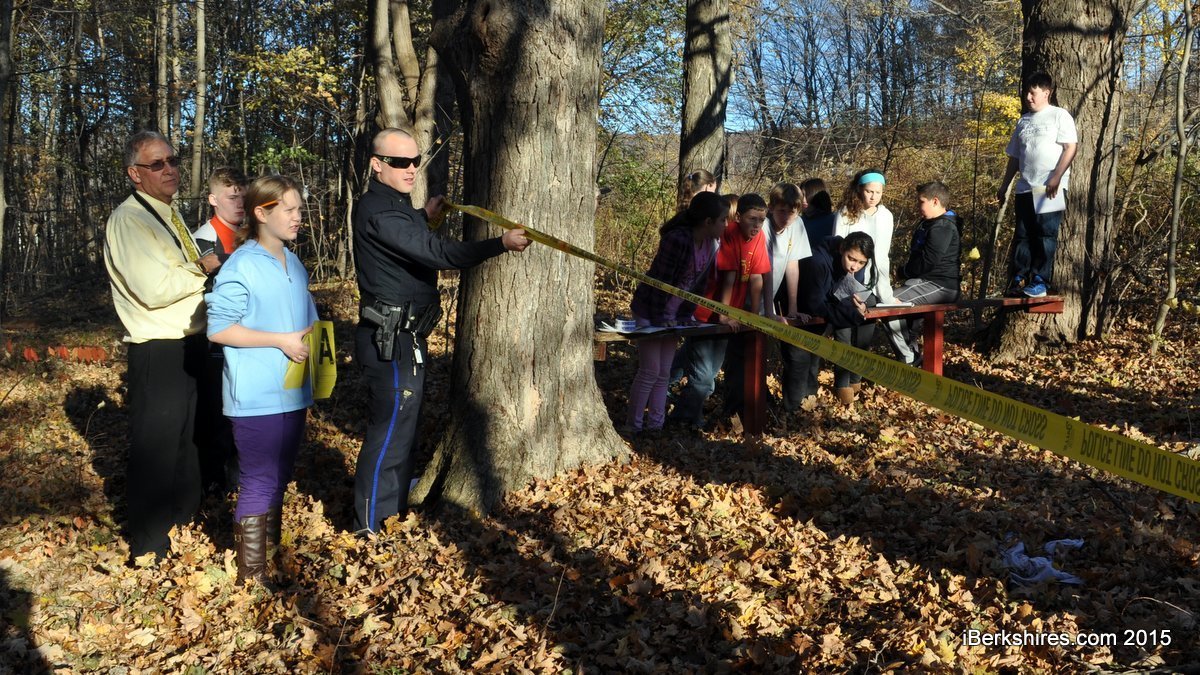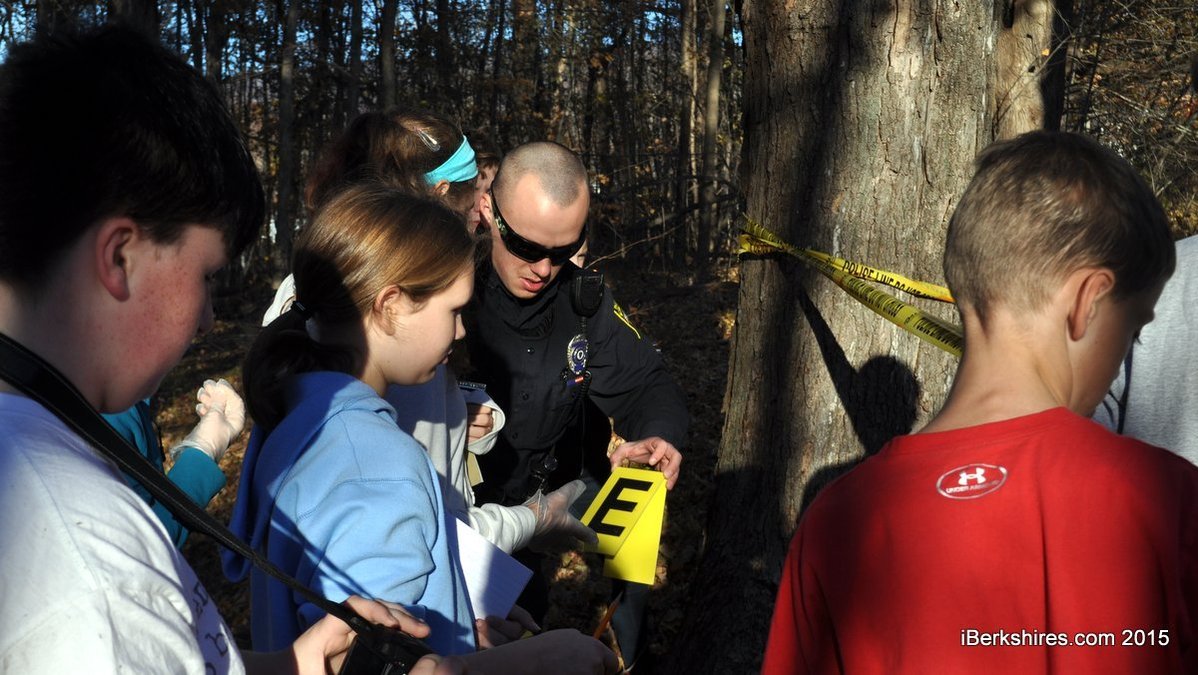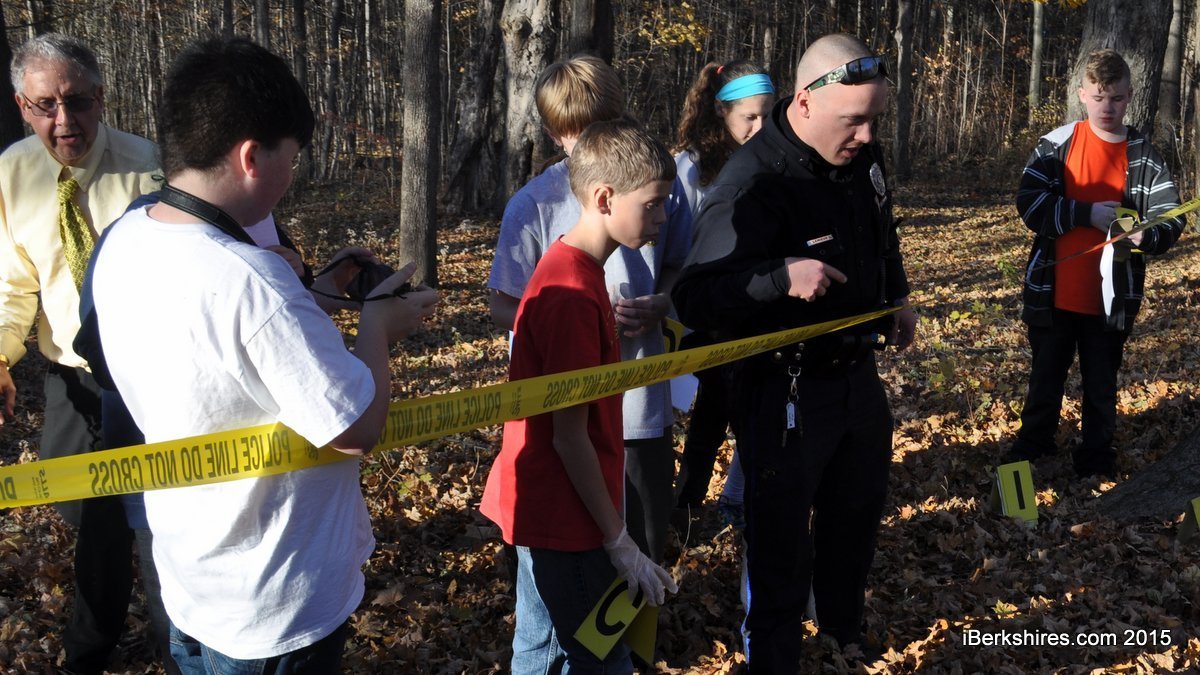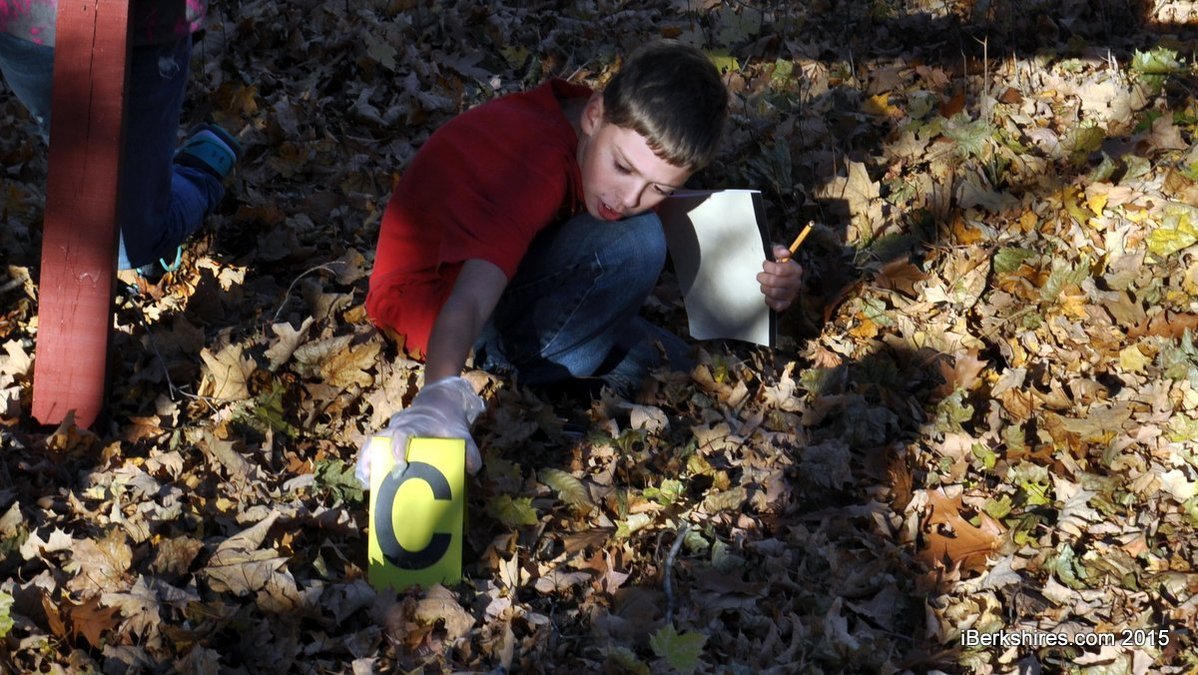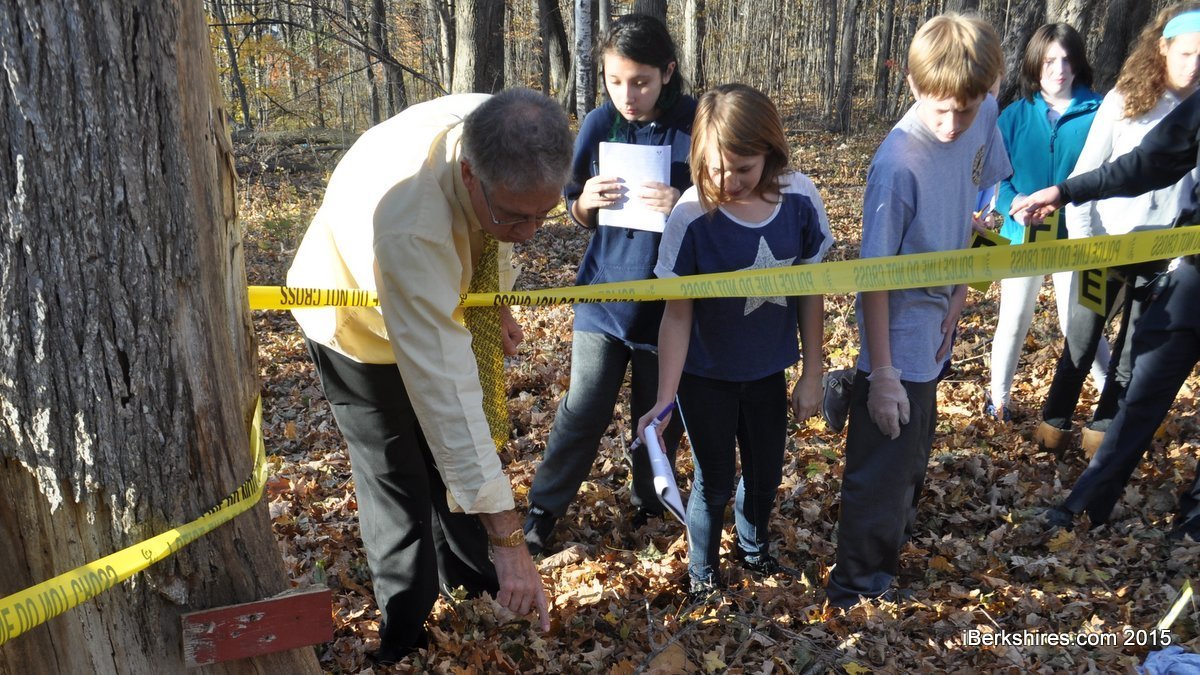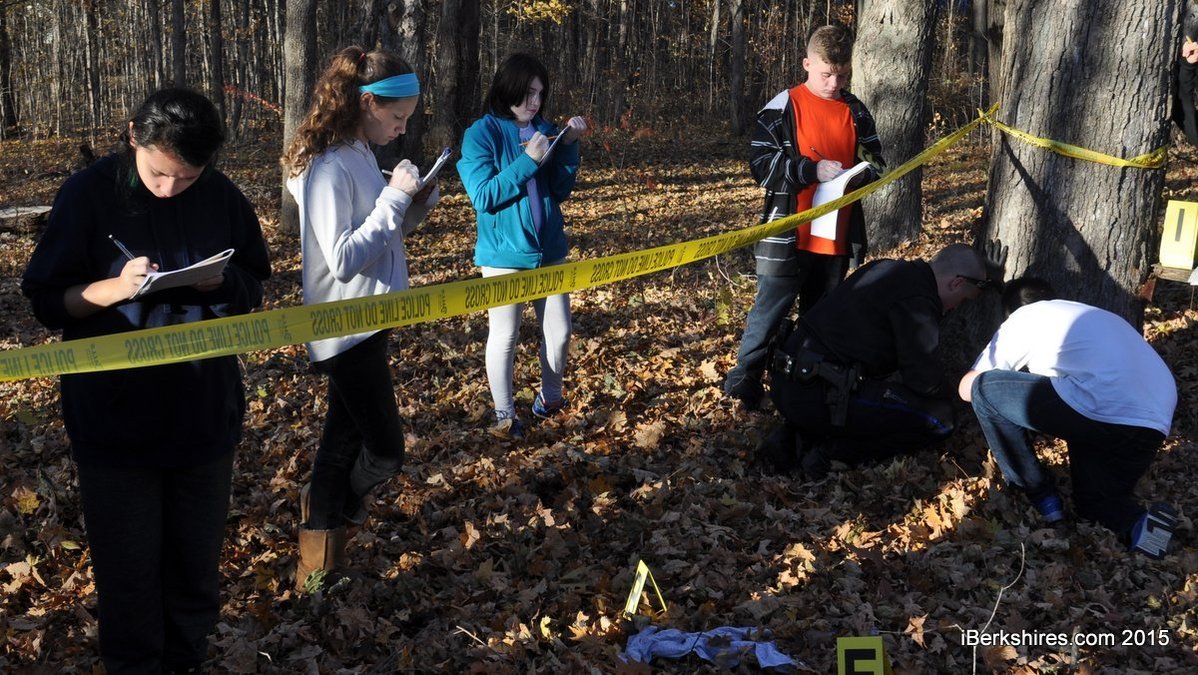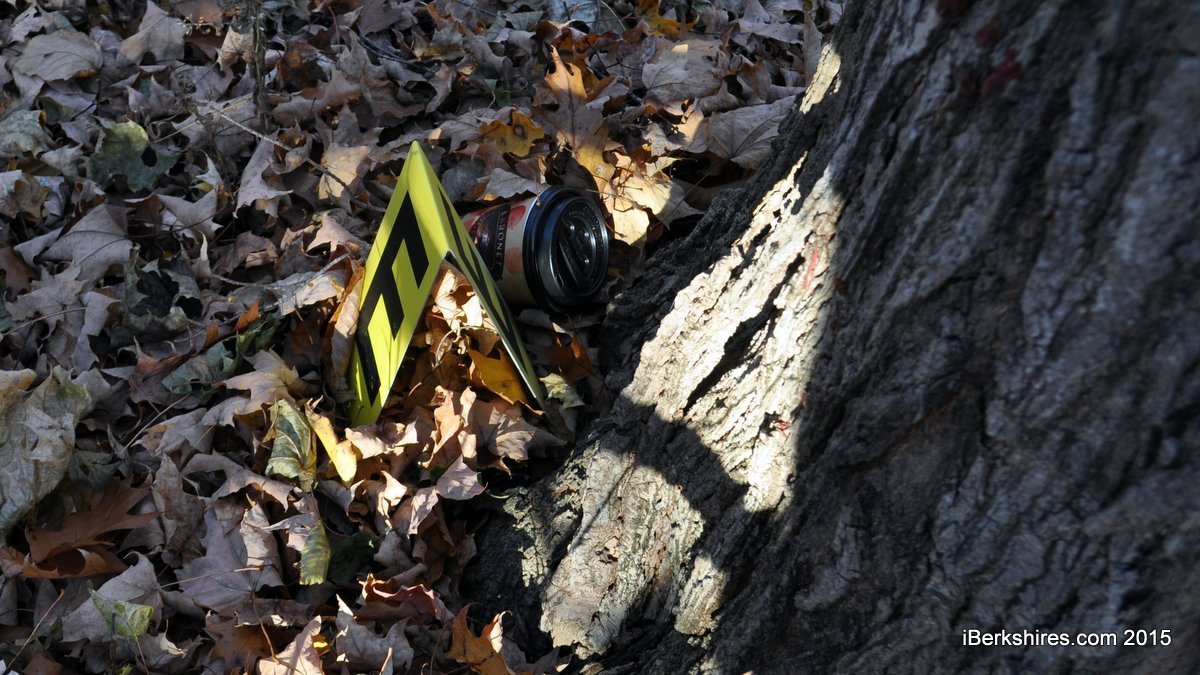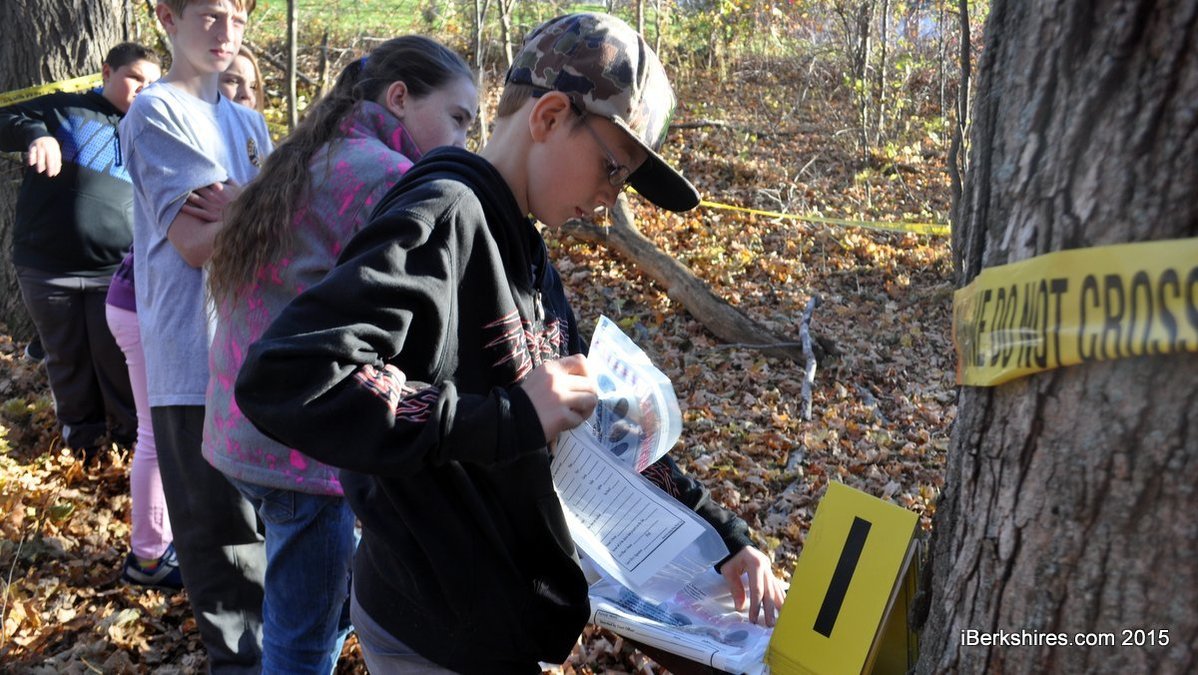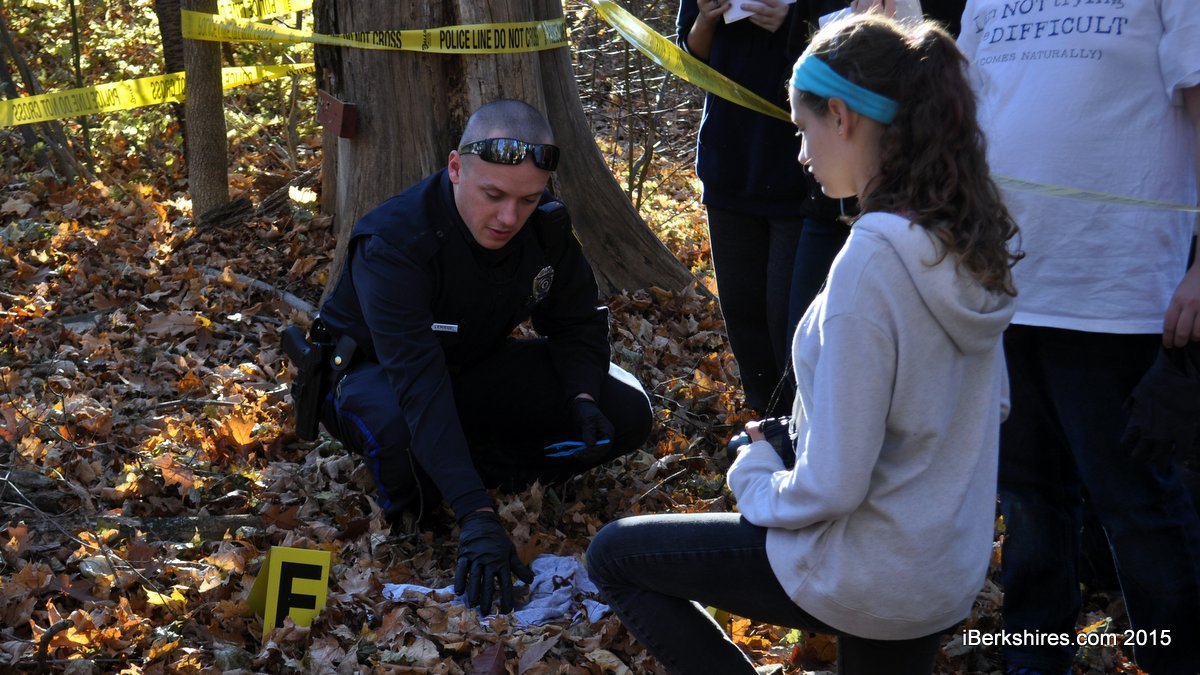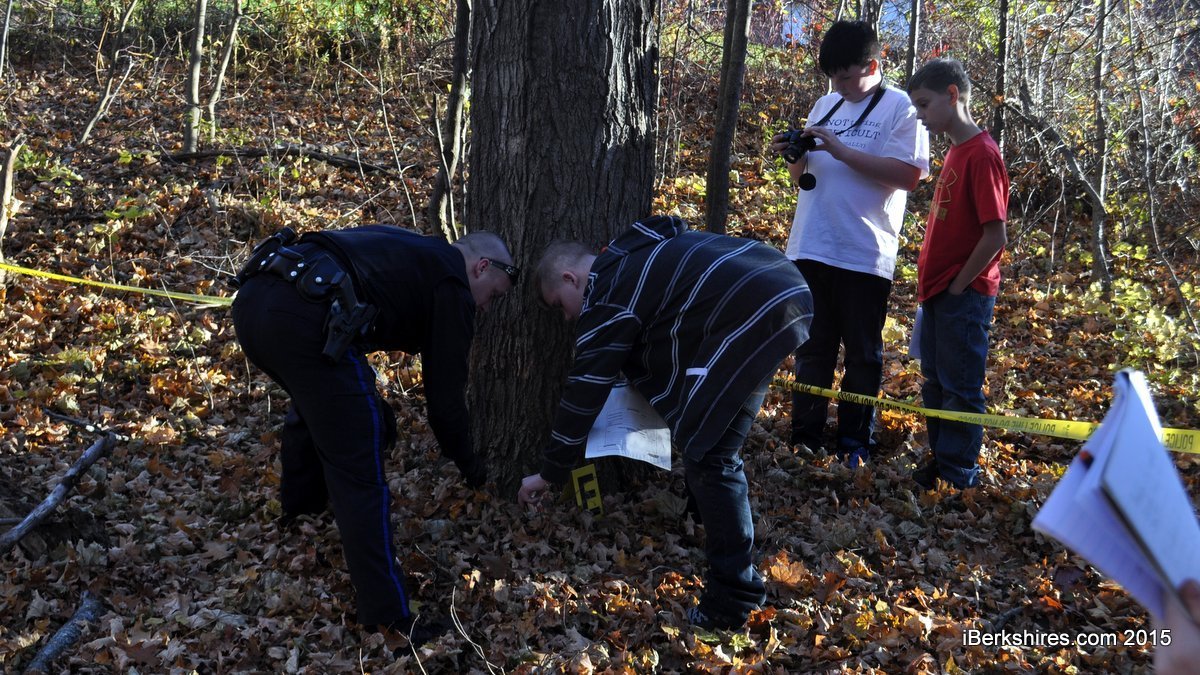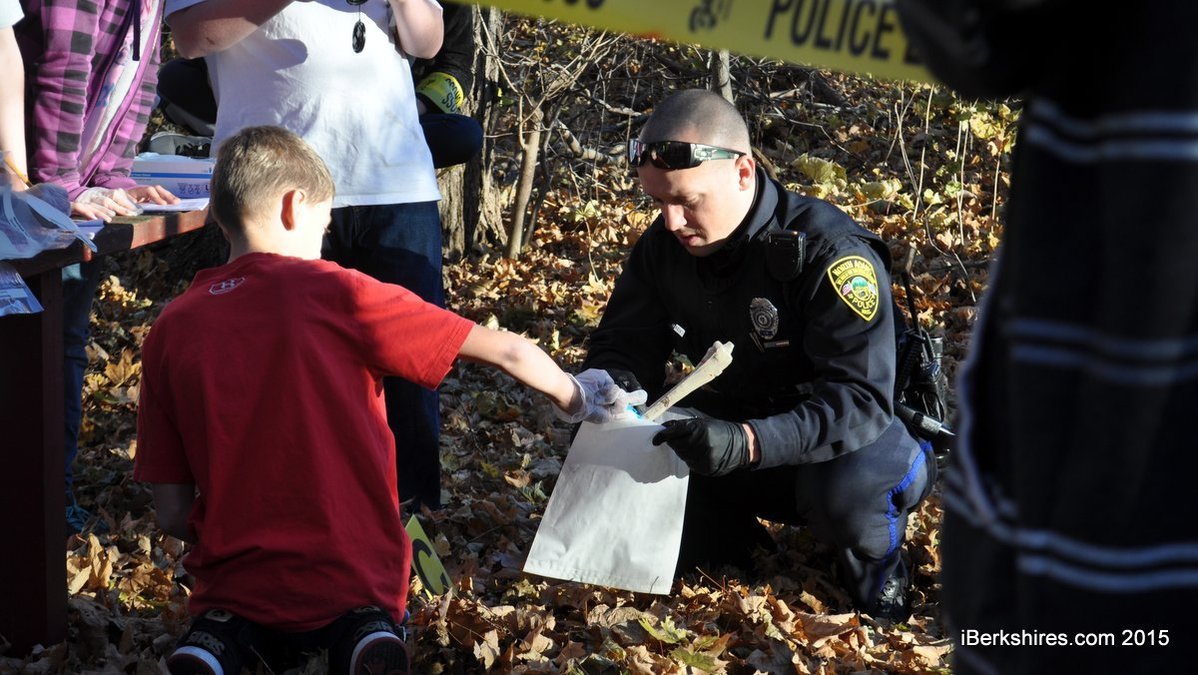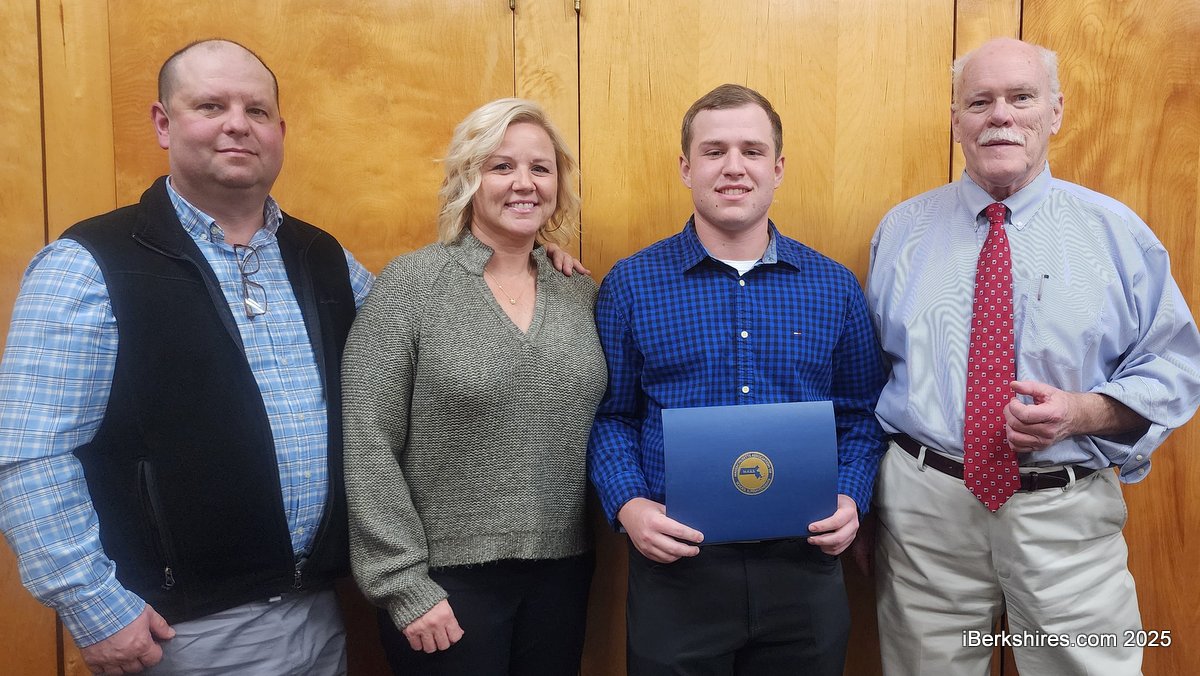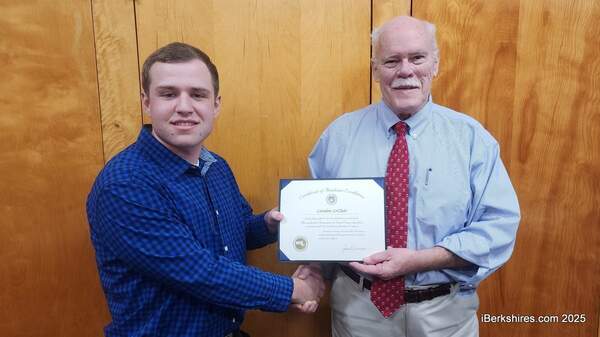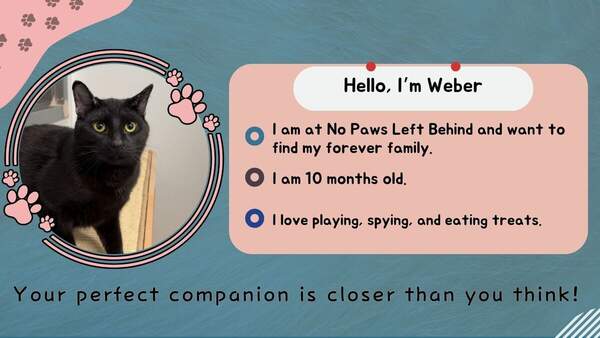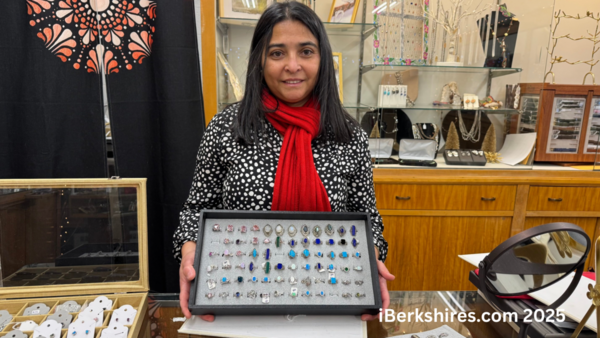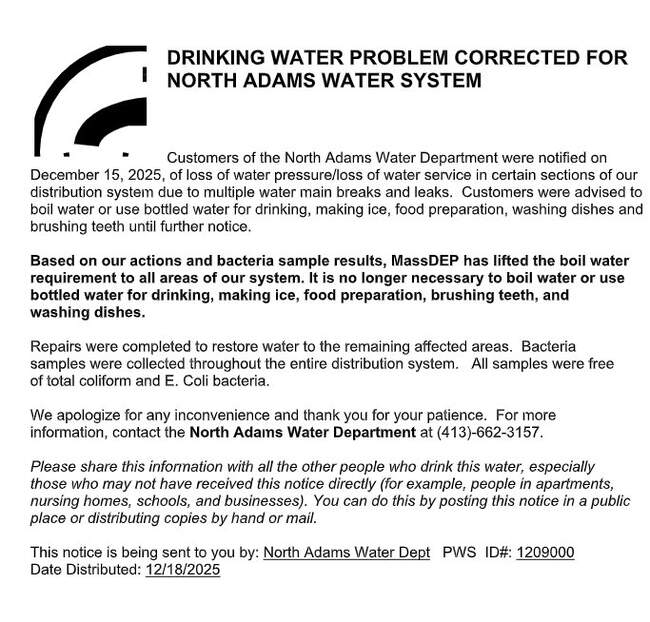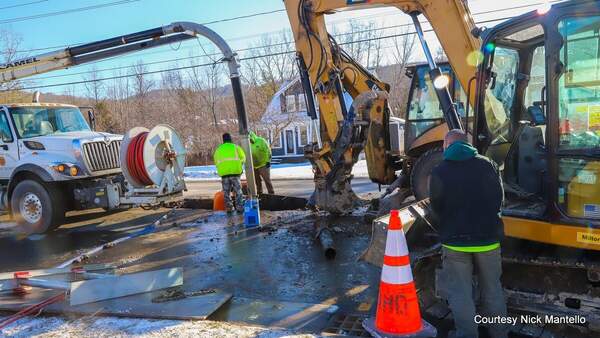Sullivan Forensic Students Investigate 'Crime'
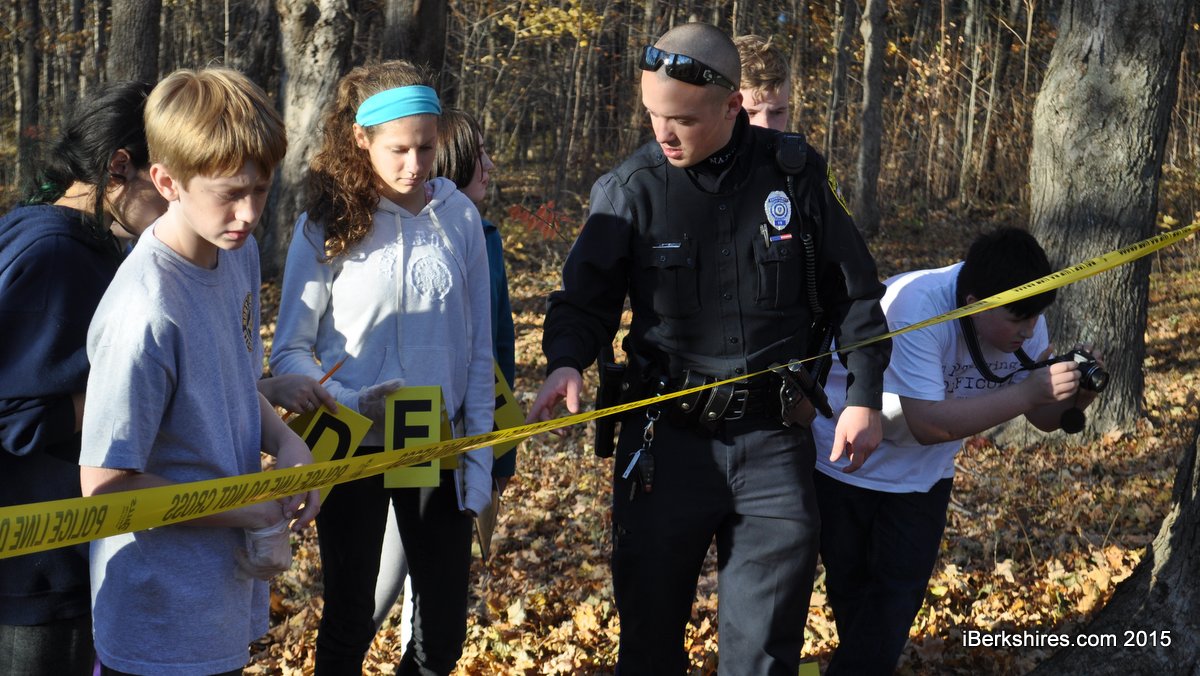 Students in the after-school program at Sullivan School help Officer David Lemieux look for evidence at a 'crime scene' near the school. Students in the after-school program at Sullivan School help Officer David Lemieux look for evidence at a 'crime scene' near the school. |
NORTH ADAMS, Mass. — Sullivan forensic science students took their knowledge into the field and investigated a "crime scene."
The incident happened when these things often do — on a beautiful Monday afternoon at Sullivan School.
James Holmes' forensics after-school program waited in the cafeteria for Police Director Michael Cozzaglio, who was to give a presentation on police procedures. Then the day took a sudden turn when a strange nameless man bolted out of the woods proclaiming that he found bones and a bloody shirt.
Luckily, Officer David Lemieux was in the area and, upon arriving, instantly began asking the students what the strange man looked like. After finding that the students knew a thing or two about forensic science, he asked for some help and brought the students down to the crime scene with police tape and evidence markers.
Of course, the "crime scene" was staged for the purpose of the program but with the students' focus, one could have difficulty figuring this out.
The children intensely scanned the marked-off area for more evidence and separated anything strange they found into evidence bags.
Lemieux said the hands-on experience can really open up the door for a lot of students who may have a limited view on how vast the field of science and its applications actually are.
"I think a lot of kids want to actually get into this field so I think it is something that can get them into it early on," Lemieux said. "They might want to do something like this someday."
The students tiptoed around the evidence and used the proper walking technique in the crime scene so they did not disturb any unfound evidence. They drew maps of the crime scene, took careful notes, and took pictures of the evidence with the understanding that next week they will have to analyze everything and solve the mystery.
Lemieux said forensics is a lot harder than it looks on television, and it is important for students to comprehend the reality of it and the scientific reasoning and procedures it so strictly adheres to.
He added that the students also pick up good eyewitness skills that often are hard to come by in the field.
"If they were to actually see something like crime they have the ... skills to be a good eyewitness, you really don't see it all of the time," he said. "But when you do it all of the time you learn and pick up those key eyewitness skills."
Holmes has made an effort to bring more police into the classroom and he said with the help of Cozzaglio, Mayor Richard Alcombright, and Superintendent of Schools James Montepare, he has been able to run various programs that not only educate students, but familiarize them with their local police officers.
"They are having a positive interaction with the police, and I can't say enough great things about the department," Holmes said. "They go out of their way to work with these kids."
Tags: after school programs, forensics, north adams police, Sullivan School,

